Maidenhair fern plant care: learn how to grow this tricky indoor plant
A maidenhair fern is far from being the easiest indoor plant to grow, but here's how you can keep yours looking lush and lovely all year round
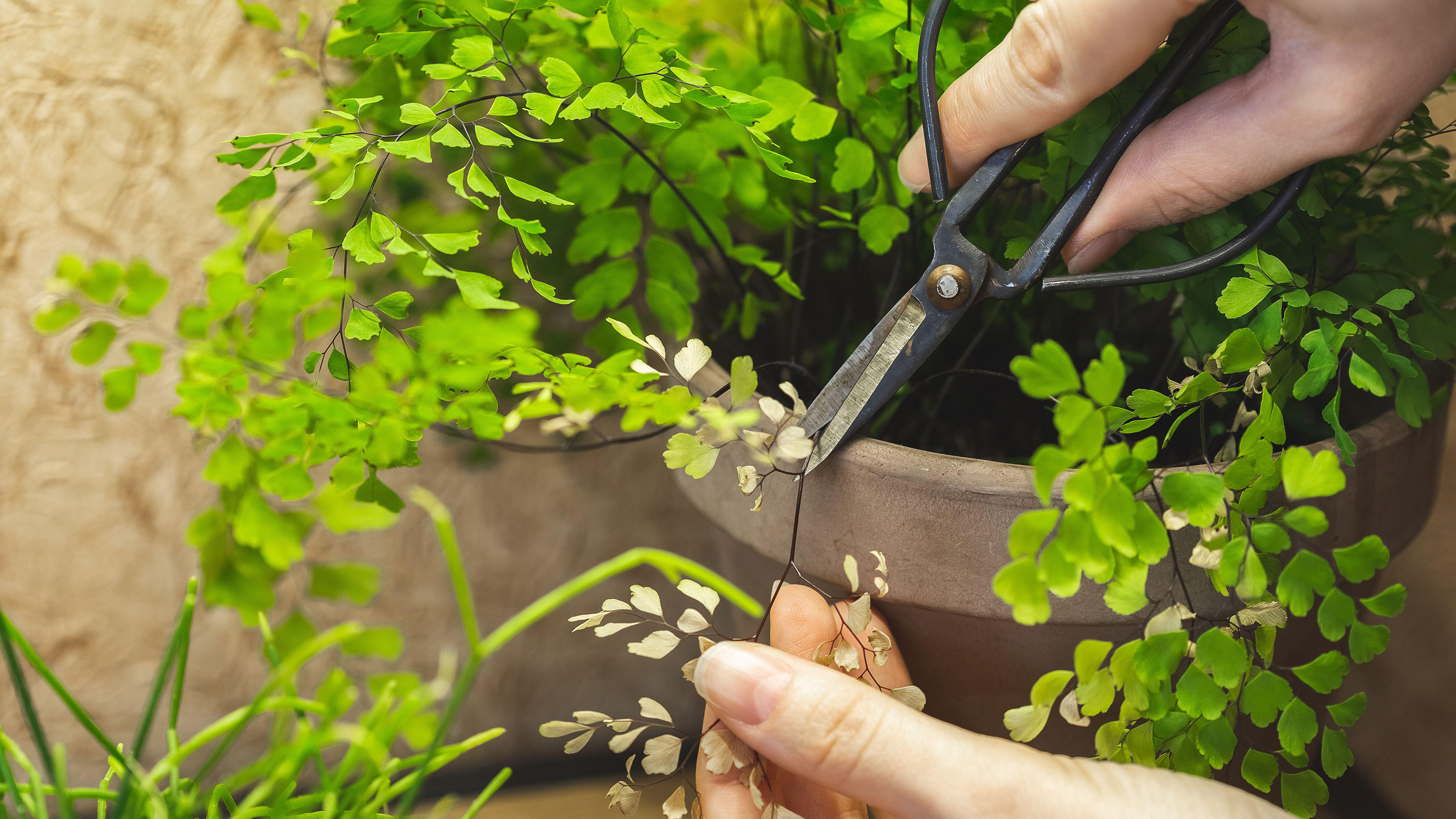

Elegant and graceful, the maidenhair fern’s black stems and apple green lacy foliage combine to add a fountain of lush leaves to a steamy bathroom or kitchen. Its small stature adds to this pretty fern’s allure; growing to just 20x32in (50x80cm), it will suit almost any home, whatever the size.
The maidenhair ferns sold as houseplants are tender evergreens and include the delta maidenhair, Adiantum raddianum, and the southern maidenhair, Adiantum capillus-veneris. However, many Adiantum species sold in garden centers and online are fully hardy and will grow happily year-round outside in the garden, but some are deciduous and will lose their leaves over winter, so check before buying that you have the right one for your home. You may also see these little ferns growing in the wild in cracks between rocks besides streams and waterfalls, where they thrive in the humid conditions.
The houseplant maidenhairs are native to the forests of South America and have a lush bushy habit, with large triangular leaves divided into tiny fan-shaped leaflets, which make this delicate species one of the best indoor plants. As well as the species, look out for the cultivar 'Brilliantelse', which sports pinky-red young leaves that then turn green as they mature.
Top maidenhair fern care tips for growing success
Maidenhairs are not the easiest plants to grow at home, since they demand constant warmth, high humidity levels and moist but not wet compost, so be prepared to put in some effort if you decide to include them in your indoor garden ideas.
However, they will tolerate temperatures as low as 41˚F (5˚C) for short periods and you can grow them outside in a sheltered spot in summer, if the nights are not too cold. Choose an Adiantum capillus-veneris, which is hardier than the more popular houseplant A. raddianum, to grow outside in summer if you live in a colder area.
1. Keep the compost moist at all times
Unlike the Swiss cheese plant or yucca plant, who appreciate their soil being allowed to dry out between waterings, the trick with this fern is to keep its compost moist all year round. But never allow it to become waterlogged.
It's a delicate balance but the way to achieve this is to grow it in a pot with drainage holes in the base, which you can then slip into a waterproof container or place on a saucer.
Water it when the top of the compost feels almost dry, taking it out of its waterproof container and setting it under a slow-running tap in the sink, targeting the compost rather than the foliage.
When the compost is saturated, leave the plant on the side to drain fully before replacing it in its waterproof container or on a saucer. This will ensure that the compost never becomes soggy which can result in root rot, an incurable disease common in succulents, that may kill your fern if all the roots fall prey to it.
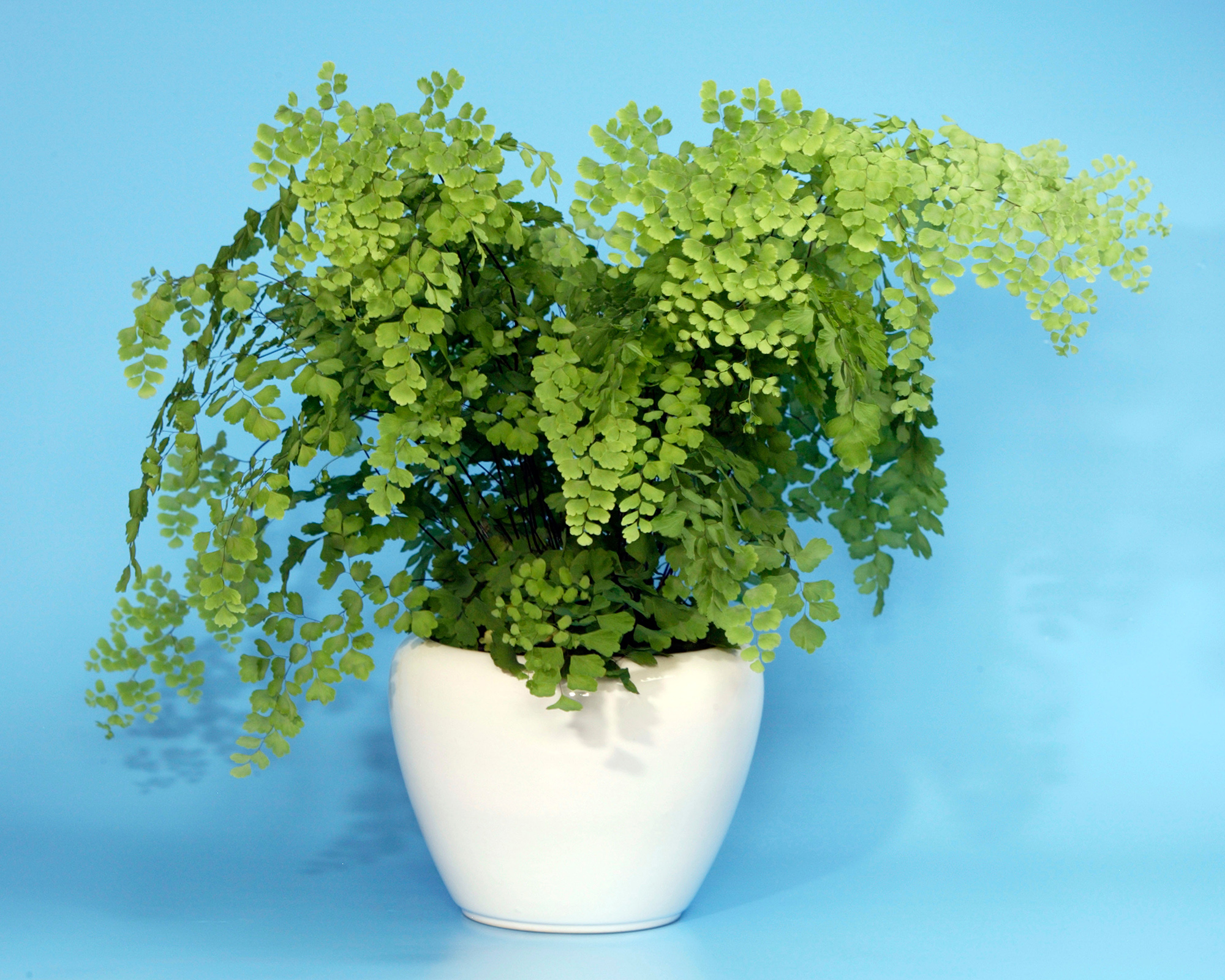
The arching fronds of the maidenhair frond create an airy, graceful effect in a humid spot such as bathroom
2. Mist the leaves regularly
Like a prayer plant, your maidenhair fern will appreciate a good misting. Remember to also mist the leaves daily, or every few days if you're growing this as a plant for bathrooms or kitchens, using tepid tap or distilled water. You can also stand your plant on a shallow tray filled with pebbles and topped up with water, which will create a humid atmosphere around it as the moisture evaporates. However, misting may also still be required to keep this delicate little fern happy.
Feed your fern with balanced liquid fertilizer once a month from spring to fall.
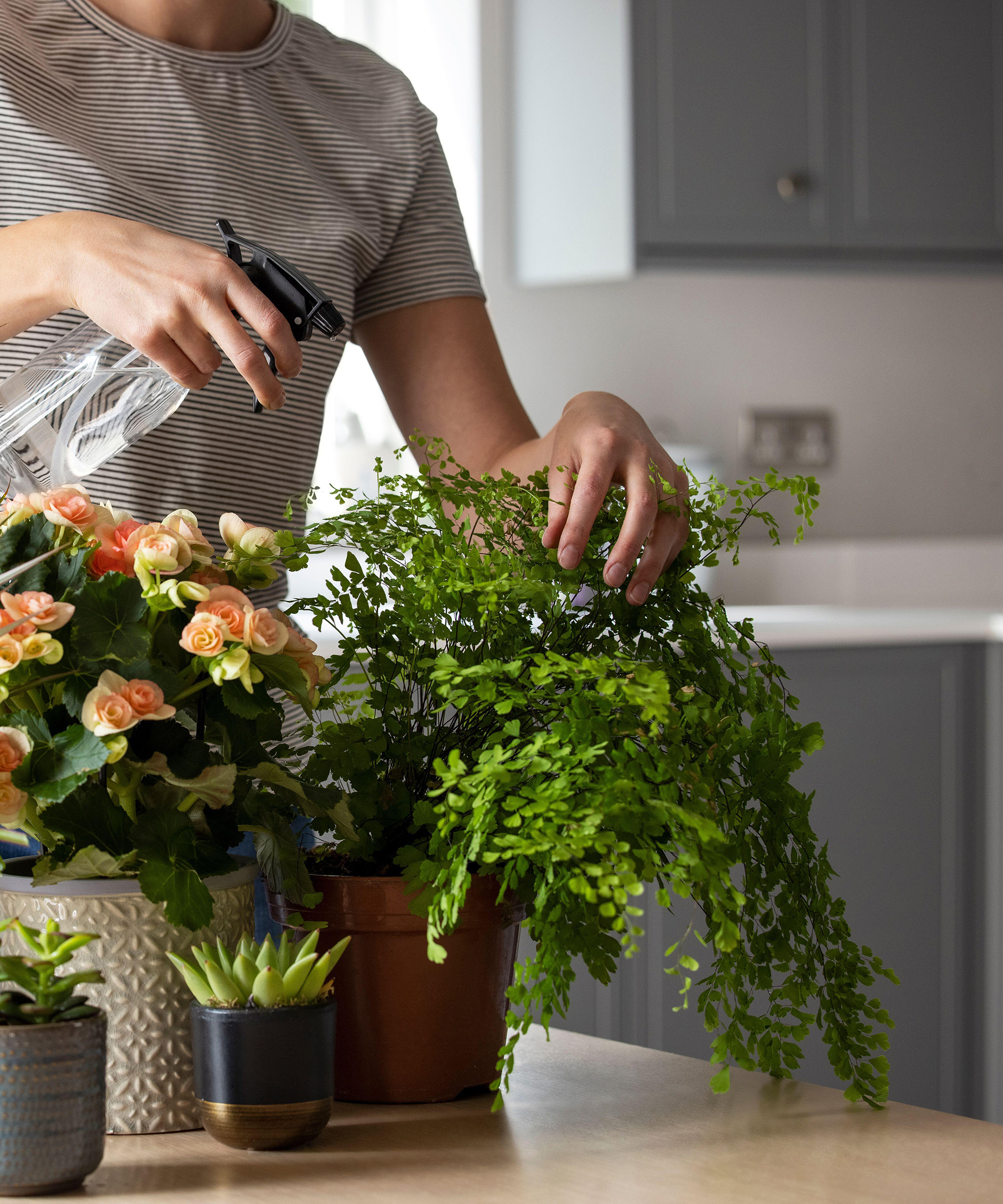
Mist your maidenhair fern every couple of days if it’s in a kitchen, or every day in areas of the house with a drier atmosphere
3. Keep your maidenhair fern out of direct sun
Maidenhair ferns aren't low light indoor plants but keep them away from direct sun which may scorch its delicate foliage. Display your maidenhair fern in a spot that receives bright, indirect light. It prefers constant warmth – a temperature range of 60–75˚F (15-24˚C) is ideal, with a minimum night-time temperature in winter of 50˚F (10˚C).
High levels of humidity are also needed to keep this fern’s foliage healthy, so keep as bathroom or kitchen plants, alongside other humidity-loving houseplants, such as orchids and calathea. Or try them in a terrarium, where they will enjoy the misty atmosphere.
Keep this little prima donna away from radiators and heaters, too, which may scorch the leaves and dry the air around it, and avoid drafty spots, such as a hallway close to a front door.
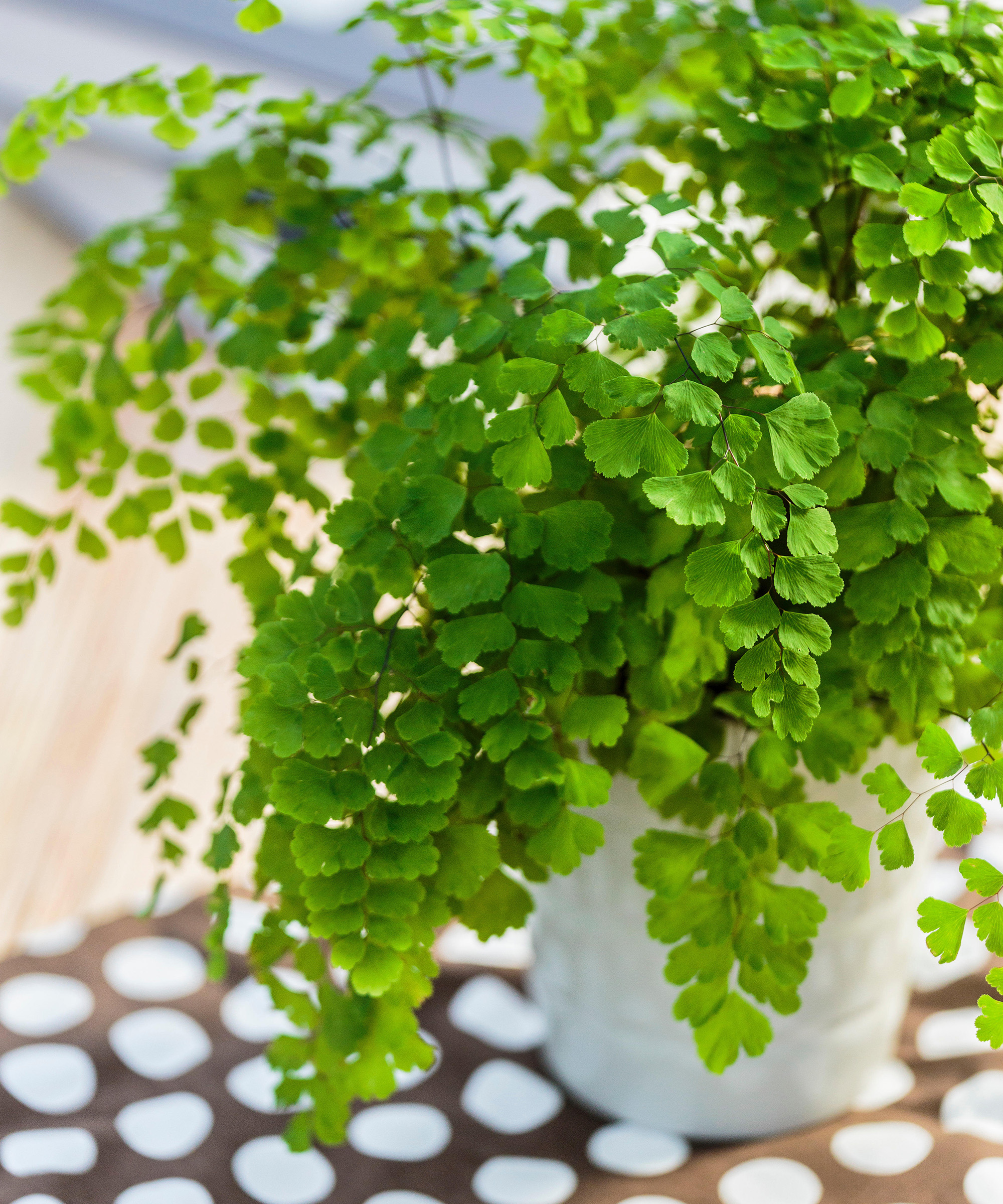
Keep your maidenhair healthy by setting it in bright, indirect light and mist the leaves daily
Key problems with maidenhair ferns
- Brown foliage at the base of the plant: This is normal, particularly in early spring, and you can simply remove these old leaves at the base to keep the fern tidy. However, brown tips on the leaves on the upper stems may mean the plant is too near a sunny window or a heater, so place it out of harm’s way and remove the affected foliage. You may have noticed a similar issue arising with your spider plants and it could also mean that your plant needs watering, so simply follow the instructions above to rewet the compost, and ensure you keep to a misting regime to retain high humidity levels.
- Pale or yellow leaves: This may also be the result of too much sun, or too little sun, so again try moving the plant to provide it with optimum light conditions. Also give the fern a feed, if it’s during the growing period and you have not applied any in the past four or five weeks – if you have fed it recently, don’t be tempted to add more, as this could do more harm than good.
- Pests and diseases: Despite its high demands in other respects, this fern suffers from few pests and diseases. The main pests to look out for are mealybugs, which are commonly found on lots of houseplants like fiddle leaf figs, and hide beneath a white fluffy coatings on the undersides of leaves or on the stems. Or scale insects that resemble hard little shells covered with a waxy coating. Both suck the sap from their host plants and cause distortion and poor growth. To treat them, try wiping off the mealybugs as soon as you see them or treat with an organic insecticide that contains fatty acids or plant oils. Scale insects may be more difficult to remove try dipping a small paintbrush in methylated spirits and dabbing it gently on the pests to kill them.
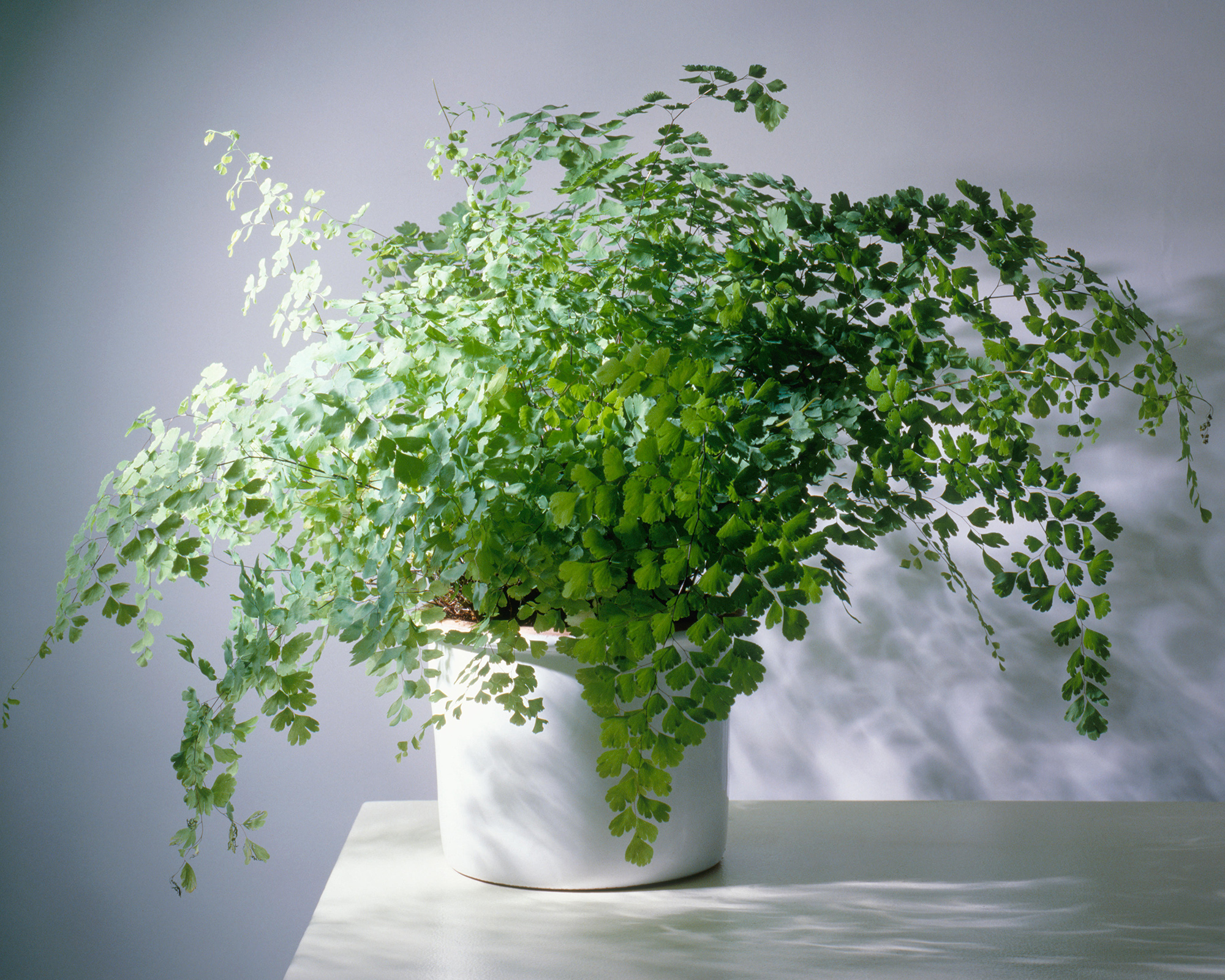
If your maidenhair fern develops brown leaf tips, too much sun may be the cause so move it away from the window and see if that improves its health
How do I propagate a maidenhair fern?
Like kentia palms, maidenhair ferns are propagated by division. Take a look at your fern and you will see that it is made up of lots of individual stems, which can be gently prised apart to create new plants. The best time to divide a maidenhair is in spring, when it has outgrown its original pot and you can see roots growing through the drainage holes at the bottom.
Water it well, then gently ease it out of its pot. Using your fingers or a sharp knife, divide the rootball into sections, each comprising a few stems with roots attached. Repot the sections into new pots, with drainage holes at the base, in fresh peat-free multipurpose compost, and water well. Replace the newly divided plants in the same area where the original plant was thriving.
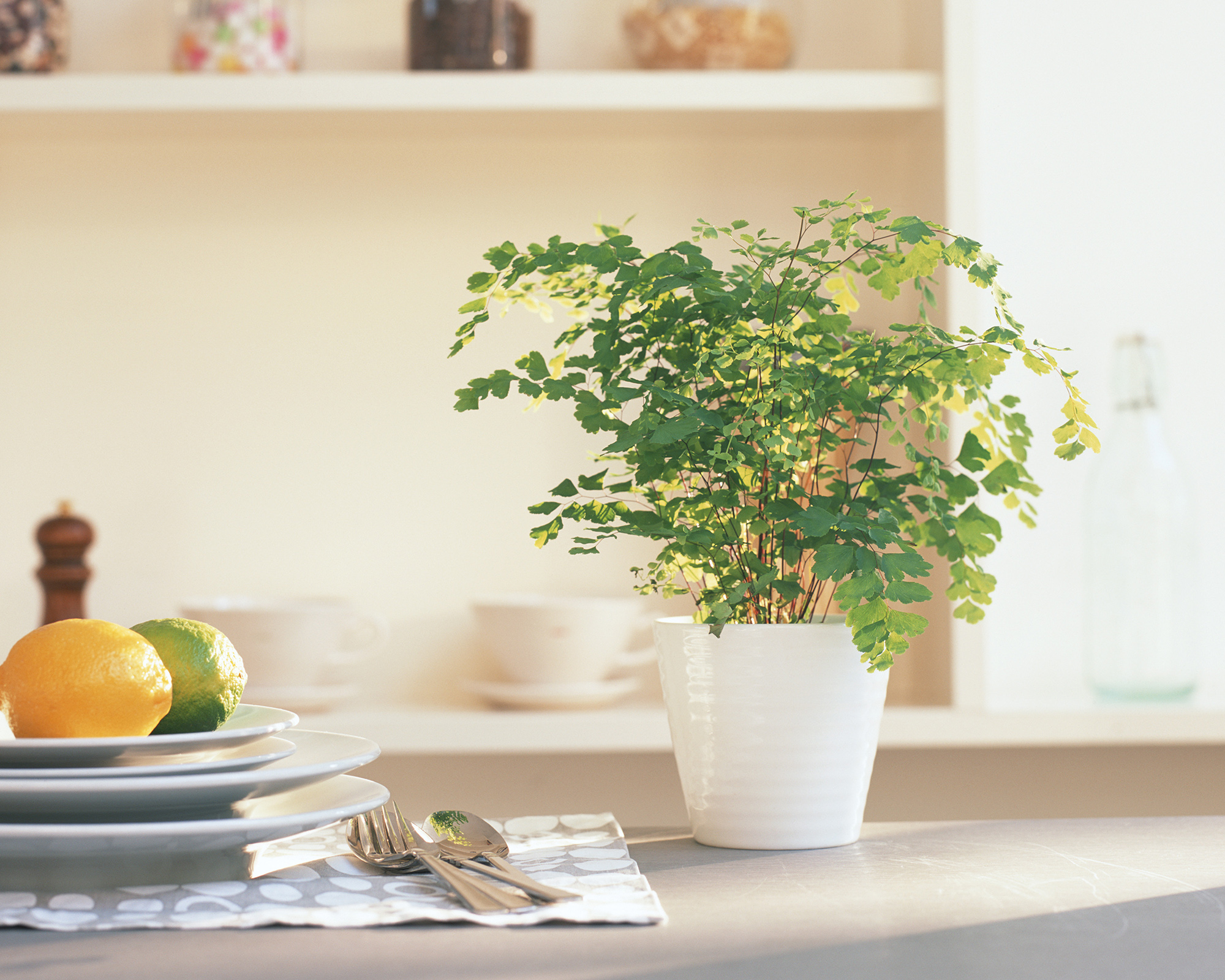
Maidenhair ferns will be happy in the humid atmosphere of a kitchen
Should I mist maidenhair ferns?
The simple answer is ‘yes’, particularly if you are growing it as a bedroom plant or in a living or dining room that has low humidity levels. Mist the leaves with tepid water once a day in these areas, or every few days in a more humid kitchen or bathroom.
Why does my maidenhair fern keep dying?
A maidenhair fern isn't classed as a low maintenance indoor plant, so there are a few reasons why yours may not survive. Over or under-watering can kill a plant. This fern also needs a humid atmosphere but not too much sun, so a hot, brightly lit windowsill could result in brown-tipped, crisp foliage.
Or you may be displaying it too near a radiator or heater, also resulting in dried, brown leaves, or where the temperature fluctuates too much. Growing a fern in a dark gloomy area can limit the growth of healthy young foliage, while older leaves will turn yellow when they are unable to photosynthesize efficiently.
To avoid all of these problems, simply follow the growing tips above to keep your plant in good health.
Where to buy Maidenhair ferns
Maidenhair ferns are a common indoor plant so you should find them sold at your local garden center or plant shop. Failing that indoor plants are readily available online. Follow our quick links to shop for one today.
Where to buy maidenhair ferns in the US:
- Shop maidenhair ferns at Burpee
- Shop maidenhair ferns at Lowes
- Shop maidenhair ferns at Monrovia
- Shop maidenhair ferns at Spring Hill Nurseries
Where to buy maidenhair ferns in the UK:

Zia Allaway is a garden book author, editor, and journalist, and writes for a range of gardening and women’s magazines, including Easy Gardens, Homes & Gardens and Livingetc, as well as The Guardian and The Daily Telegraph newspapers. She has also written books for the Royal Horticultural Society and Dorling Kindersley publishers, including Eco-Gardening, Compost, Low Maintenance, Practical House Plant Book, Practical Cactus & Succulent Book, Indoor Edible Garden, What Plant Where, and the Encyclopedia of Plants and Flowers.
